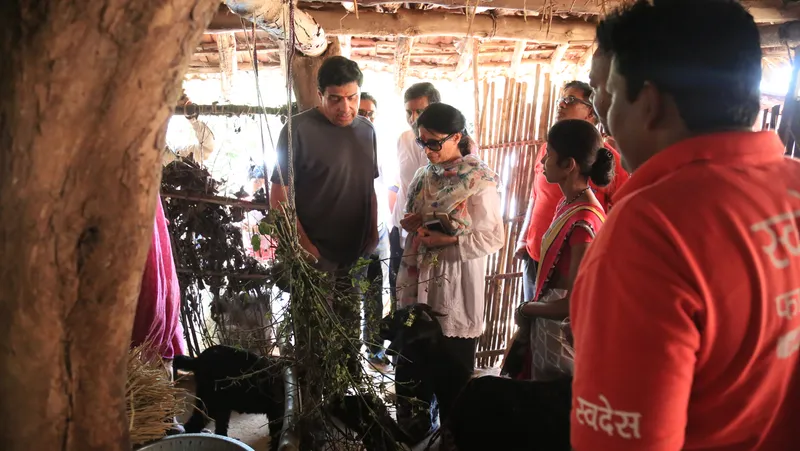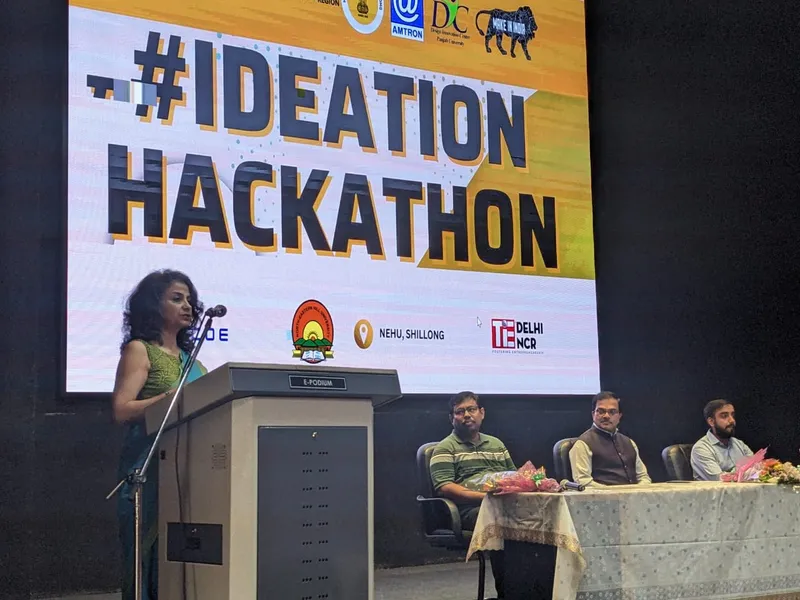[ad_1]
Funding
Bebe Burp secures Rs 8 Cr in pre-Series A funding
Baby food brand Bebe Burp has secured Rs 8 crore in its pre-Series A funding round.
The funding came from venture capital firm Gruhas Collective Consumer Fund, which was launched by Gruhas in collaboration with Collective Artists Network.
The capital is set to propel the brand in the baby food industry and reinforce Bebe Burp’s commitment to quality, safety, and nutrition, the company said, in a statement.
“Our focus will be to expand into new domestic and international markets through the recently acquired funds. To increase brand awareness and visibility, we will employ diversified strategies ranging from influencer partnerships to creative campaigns,” said Chirag Gupta, Co-founder, Bebe Burp.
“Bebe Burp has a vision in place to penetrate ecommerce and quick commerce to fortify its presence in the market while investing in R&D to improve innovation,” added Gupta.
“It’s been my vision to make healthy food alternatives accessible to mothers across the globe and, at the same time, inspire and promote the idea of women leading businesses,” said Shruti Tibrewal, Co-founder, Bebe Burp.

The company, which was founded in 2018, plans to allocate more resources to regions with higher market potential and strong competition to solidify its entry into the market.
Bebe Burp’s strives to create products using traditional grandma’s recipes and organic ingredients.
Screwvalas’ Swades Foundation announces ZCZP issue on NSE at Rs 10 Cr
Swades Foundation, which delves into holistic rural empowerment, has announced a zero coupon zero principal (ZCZP) issue on the National Stock Exchange’s (NSE) Social Stock Exchange (SSE).
This will be the biggest issue size by an NPO (not-for-profit) on the SSE, and the issue will be open until August 13 for online subscription, Swades Foundation said in a statement.
The funds raised through this issue are set to support Swades Foundation’s programmes, including sustainable livelihood through goat rearing, health and hygiene initiatives, and youth education and employability programmes.

“The SSE with its level of diligence for a listing and the subsequent reports of fund utilisation (for the donors) will extend a lot of transparency and credibility to the sector, which will continue to encourage a lot of new retail donors,” said Ronnie Screwvala, Co-Founder, Swades Foundation.
These programmes aim to create a lasting difference in the lives of rural communities, enabling them to lead dignified and sustainable lives and livelihoods, the company said.
“Our 10th listing of Swades Foundation is raising Rs 10 crore which is nearly equal to the first seven issues combined and is a testament to the growing interest and trust being shown by NPOs and donors on NSE SSE platform,” said Ashishkumar Chauhan, MD & CEO, NSE.
Other news
NSRCEL, Nasscom AI announce co-incubation partnership
The incubation centre for startups and emerging businesses, NSRCEL. at the Indian Institute of Management Bangalore (IIMB), and Nasscom AI have announced a co-incubation partnership for artificial intelligence (AI) and deeptech startups.
The initiative aims to foster technologies and support entrepreneurial ventures within the Indian startup ecosystem.
“Business mentoring plays a crucial role in guiding AI startups through the complexities of emerging technologies and market dynamics. At NSRCEL, we recognise the importance of providing comprehensive mentoring that goes beyond technical expertise.
“This holistic support ecosystem is instrumental in nurturing these startups, equipping them with the skills and resources necessary to make a transformative impact on a global scale,” said Anand Sri Ganesh, CEO, NSRCEL.
A recent three-month pilot offered startups a hybrid incubation experience wherein participants could access NSRCEL’s resources and Nasscom AI’s industry insights, technical mentorship, and advanced AI infrastructure. This included specialised workshops, one-on-one mentoring, and opportunities to participate in prominent AI-focused events, accelerating startup growth and visibility, according to a statement.
Vitt.AI, Yarnit, Onelogica, Imagined Reality Interactive, Sunix AI, Nuronics Labs, Soket AI Labs, GoCodeo, Vodex, and PaceRobotics participated in the pilot programme.
“By joining forces, we’re creating a robust platform that will empower the next generation of AI innovators. This collaboration underscores our commitment to building capacity, driving technological advancement, and positioning India at the forefront of the global AI revolution,” said Praveen Mokkapati, Deputy Director-AI, Nasscom.
CoRover.ai partners with EthosAI.one
Conversational AI platform CoRover.ai, which created BharatGPT, is partnering with EthosAI.one, an AI auditing firm focused on the future of responsible AI.
The partnership aims to ensure the reliability, fairness, and accuracy of BharatGPT, making it a powerful and trustworthy AI solution, according to a statement.
EthosAI.one is set to apply its comprehensive evaluation platform to continuously audit and enhance BharatGPT models.
“By leveraging their (EthosAl’s) expertise in Al auditing, we can ensure BharatGPT adheres to the highest ethical standards. This collaboration signifies a crucial step forward in building human-centric Al that is both beneficial and trustworthy,” said Ankush Sabharwal, CEO, CoRover.ai.
By benchmarking CoRover.ai’s LLMs against industry leaders like ChatGPT, Llama2, and Gemini AI, EthosAI.one is looking to provide a detailed performance score, highlight areas for improvement, and deliver targeted enhancements tailored to CoRover.ai’s specific business and technological needs.
PM-DeVINE project to establish digital design and 3D printing centre
TiE Delhi-NCR is partnering with AMTRON to run a 3D printing ideation competition under the PM-DevINE Project.
PM-DevINE Project – 3D Printing Center of Excellence is supported by the Ministry of Development of North Eastern Region, Government of India, to promote Industry 4.0 enterprises in the region.
The project is part of the Prime Minister’s Development Initiative for North East Region (PM-DevINE), and will be established within the Electronic Manufacturing Cluster in Tech City, Guwahati, said a statement.
AMTRON is implementing several flagship projects, including the 5G Training Labs and Use Case Development, funded by the North Eastern Council and Ministry of Development of North Eastern Region.
In line with its commitment to nurturing innovation, AMTRON organised nine Ideation Hackathon events across all eight states of the north-eastern region, between June 7 and June 11. The grand finale is scheduled for August 27-28 in Guwahati.

Each team received a cash prize of ₹11,000 and will also benefit from mentorship provided by industry experts, TiE chapters, DIC, Panjab University, and Indian Institutes of Management (IIMs) to help realise their entrepreneurial visions.
The top five teams in the grand finale are set to receive a combined prize of ₹50 lakh, 3D printing equipment, and comprehensive advisory services, including legal, financial, and go-to-market support. They will also gain access to early-stage angel investment funds to further their ventures, said the statement.
[ad_2]
Source link





